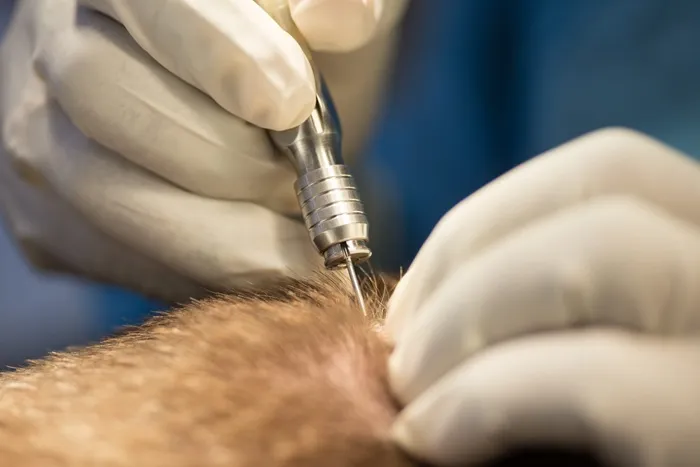Platelet – Rich Plasma (PRP) has emerged as a popular treatment in the fields of hair restoration, orthopedics, and aesthetics. At its core, PRP is a concentrated form of a patient’s own platelets suspended in plasma. Understanding the sources of PRP is crucial for both medical professionals and patients, as it directly impacts the quality and effectiveness of the treatment. In this article, we’ll explore the primary sources of PRP, the processes involved in obtaining it, and how these factors influence its use in various medical applications.
Autologous Blood: The Primary Source of PRP
Venous Blood Collection
The most common source of PRP is autologous blood, meaning blood that is collected from the patient’s own body. The typical process begins with venous blood collection, usually from a vein in the arm. A healthcare professional uses a sterile needle and syringe to draw a specific volume of blood, typically between 10 – 60 milliliters, depending on the intended use of the PRP.
This method of collection is relatively simple, safe, and well – tolerated by patients. It also eliminates the risk of immune reactions that could occur if using blood from a donor. Once collected, the blood is immediately processed to isolate the PRP.
Centrifugation Process
After collection, the blood is placed in a centrifuge. This machine spins the blood at high speeds, causing its components to separate based on their density. The red blood cells, being the heaviest, settle at the bottom of the centrifuge tube. Above the red blood cells is a layer called the buffy coat, which contains white blood cells and platelets. The plasma, the liquid component of blood, rises to the top.
To obtain PRP, the plasma and a portion of the buffy coat are carefully aspirated. The concentration of platelets in the resulting PRP can be adjusted by varying the speed and duration of centrifugation, as well as the volume of plasma and buffy coat collected.
Different Types of Autologous PRP Based on Blood Components
Leukocyte – Poor PRP
One variation of PRP is leukocyte – poor PRP. In this type, the goal is to minimize the presence of white blood cells (leukocytes) in the final product. This is achieved by carefully collecting only the upper portion of the buffy coat, where the platelet concentration is high and the leukocyte concentration is relatively low.
Leukocyte – poor PRP is often preferred in applications where a reduced inflammatory response is desired. For example, in hair restoration, it can stimulate hair follicle growth without triggering an excessive immune reaction in the scalp.
Leukocyte – Rich PRP
Conversely, leukocyte – rich PRP contains a higher concentration of white blood cells. This type is obtained by collecting a larger portion of the buffy coat. Leukocyte – rich PRP has enhanced antibacterial and immune – modulating properties. In cases where there is an underlying infection or inflammation, such as in some orthopedic injuries or scalp conditions, leukocyte – rich PRP may be more effective in promoting healing.
Emerging Sources and Alternatives
Umbilical Cord Blood
Umbilical cord blood is a potential source of PRP. It is rich in stem cells and growth factors, which can enhance the regenerative properties of PRP. However, the collection of umbilical cord blood is limited to the immediate post – birth period. Additionally, ethical and logistical considerations need to be addressed when using umbilical cord blood as a source for PRP.
Platelet – Rich Fibrin (PRF)
Platelet – Rich Fibrin (PRF) is closely related to PRP. It is obtained through a simplified centrifugation process that results in a fibrin – rich matrix containing platelets. PRF forms a natural scaffold that can support cell growth and tissue repair. Compared to PRP, PRF has a slower release of growth factors, providing a more sustained healing response.
Clinical Implications of PRP Sources
Hair Restoration
In hair restoration, autologous venous blood is the most commonly used source of PRP. Leukocyte – poor PRP is often favored as it can stimulate hair follicle growth without causing excessive inflammation in the scalp. By injecting PRP into the scalp, the growth factors in the PRP can promote the anagen (growth) phase of the hair cycle, leading to increased hair density and thickness.
Orthopedic Applications
For orthopedic injuries, such as tendon and ligament injuries, the choice between leukocyte – poor and leukocyte – rich PRP depends on the nature of the injury. In cases where there is an acute injury with potential infection, leukocyte – rich PRP may be more beneficial. However, for chronic injuries where a reduced inflammatory response is desired, leukocyte – poor PRP may be a better option.
Conclusion
Autologous blood, primarily collected from the patient’s veins, remains the most common and reliable source of PRP. The ability to adjust the concentration of platelets and other blood components through centrifugation allows for customization of PRP based on the specific needs of the patient and the nature of the medical condition. While emerging sources like umbilical cord blood and alternative products like PRF show promise, autologous venous blood – derived PRP continues to be the gold standard in most clinical applications. Understanding the sources of PRP and their implications is essential for healthcare providers to optimize treatment outcomes for their patients.
Related topics:
- How Much Effective Is PRP for Hair Loss: What You Need To Know
- The Cost of PRP for Hair Loss: A Comprehensive Guide
- How Can I Stop My Hair From Falling Out Due to Stress?


